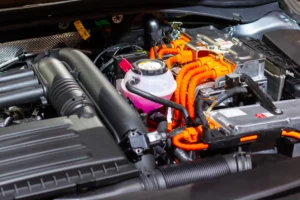In 2008, with gas prices soaring and climate awareness on the rise, car buyers turned to vehicles that could stretch every gallon of fuel. From hybrids to compact sedans, manufacturers responded with models that prioritized fuel economy without sacrificing performance fuel-efficient cars of 2008. Whether you were commuting to work or embarking on a road trip, owning a fuel-efficient car made all the difference.
In this post, we break down the top 10 fuel-efficient cars of 2008 — based on EPA ratings, performance, comfort, and reliability — to help you relive or even re-evaluate one of the most critical years in automotive evolution.
1. Toyota Prius
MPG: 48 city / 45 highway
The undisputed king of hybrids, the 2008 Toyota Prius led the pack in fuel efficiency. Its unique aerodynamic design, spacious interior, and reliability made it a favorite for eco-conscious drivers.
✅ Why it stood out:
- Excellent fuel economy
- Advanced hybrid technology
- Roomy interior for a compact
2. Honda Civic Hybrid
MPG: 40 city / 45 highway
Honda’s Civic Hybrid combined the classic Civic reliability with hybrid efficiency. Slightly more conventional-looking than the Prius, it appealed to those who wanted fuel savings in a familiar package.
✅ Why it stood out:
- Reliable and low-maintenance
- Comfortable ride
- Honda’s Integrated Motor Assist system
🔗 Honda Civic Hybrid review – Edmunds
3. Smart Fortwo
MPG: 33 city / 41 highway
Designed for city living, the Smart Fortwo offered unbeatable maneuverability and decent mileage for its size. It wasn’t built for speed, but it excelled in urban environments.
✅ Why it stood out:
- Ultra-compact design
- Easy to park anywhere
- Affordable entry-level price
🔗 Smart Fortwo specs – Car and Driver
4. Toyota Yaris
MPG: 29 city / 36 highway
The Yaris delivered simplicity and reliability in a fuel-sipping package. With its no-frills interior and compact body, it was ideal for young drivers and city commuters.
✅ Why it stood out:
- Affordable
- Low cost of ownership
- Impressive mileage for a non-hybrid
5. Hyundai Accent
MPG: 27 city / 32 highway
While not the flashiest car on the list, the 2008 Hyundai Accent offered great value for money. It was inexpensive, easy to maintain, and surprisingly fuel-efficient.
✅ Why it stood out:
- Low MSRP
- Simple and practical
- Compact yet roomy
🔗 Hyundai Accent 2008 overview – Kelley Blue Book
6. MINI Cooper
MPG: 28 city / 37 highway
Fun to drive and iconic in design, the MINI Cooper packed European flair with great mileage. It was sporty, stylish, and surprisingly efficient.
✅ Why it stood out:
- Sporty handling
- Premium interior
- Strong resale value
7. Ford Focus
MPG: 24 city / 35 highway
The redesigned 2008 Ford Focus brought a fresh look and better fuel economy to Ford’s compact offering. It was practical, affordable, and offered Sync infotainment as a bonus.
✅ Why it stood out:
- Modern tech for its time
- Good ride quality
- Easy on the wallet
8. Nissan Versa
MPG: 26 city / 33 highway
The Versa surprised many with its spacious interior and solid mileage. It was a great option for drivers who wanted room without sacrificing fuel economy.
✅ Why it stood out:
- Large cabin for a compact
- Smooth ride
- Good safety ratings
9. Honda Fit
MPG: 28 city / 34 highway
With its “Magic Seat” cargo flexibility and agile handling, the Honda Fit was a standout in the subcompact segment. It was fun, efficient, and reliable.
✅ Why it stood out:
- Smart interior layout
- Fun to drive
- Excellent reliability
10. Chevrolet Aveo
MPG: 24 city / 34 highway
The Aveo was GM’s answer to affordable efficiency. While it lacked some refinement, it delivered on value and basic transportation.
✅ Why it stood out:
- Affordable
- Basic but reliable
- Widely available
Conclusion: Efficiency Was the Name of the Game
2008 was a year where automakers faced pressure to deliver on fuel economy, and they rose to the occasion. Whether you were looking for a hybrid marvel like the Prius or a budget-friendly commuter like the Hyundai Accent, there was something for everyone.
If you’re a collector, enthusiast, or just a fan of efficient vehicles, many of these models still hold their value today. They remind us of a pivotal shift in the automotive industry — one that put efficiency in the driver’s seat.



